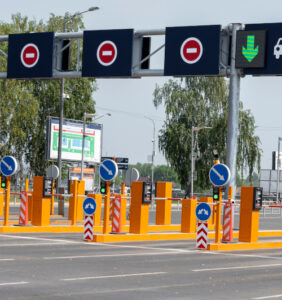
On the roads stretching between Johannesburg and Musina, cars move in quiet convoys. They’re not part of any official trade fleet, and they carry no visible markings. From the outside, they look like ordinary vehicles, second-hand sedans, family hatchbacks, the occasional well-worn minibus taxi. But hidden in spare tyres, stitched into seat covers, or tucked beneath false panels in the dashboard, these cars are carrying gold. Jewellery, coins, sometimes even small bars. It’s a world most South Africans never see directly, an invisible economy of cross-border traders moving private wealth in gold form through some of the country’s quieter routes.
This is not about large-scale smuggling operations or Hollywood-style heists. It’s smaller, more personal. It’s about families in Limpopo who send jewellery north to Zimbabwe or Mozambique, where gold fetches a better price. It’s about traders from Botswana or Namibia who come down through South Africa’s borders, carrying gold pieces to sell in Cape Town’s informal jewellery districts. It’s about movement, not in shipping containers or on freight trucks, but one vehicle, one person at a time.
These cross-border gold caravans operate under the radar for a reason. While transporting gold jewellery for personal use is legal up to a point, the informal buying and selling of gold across borders often slips into grey territory. It’s not taxed, it’s not recorded, and it doesn’t pass through any formal financial system. Yet for many of the people involved, it’s a key survival strategy. In a country where unemployment sits stubbornly high and formal banking doesn’t always reach rural areas, moving gold becomes a form of liquid wealth. It can be traded, pawned, or sold as soon as the right buyer is found.
The process itself is almost ritualistic. In Johannesburg, certain jewellery shops, especially those along Bree Street or near Fordsburg, are known to buy and resell gold discreetly. Traders arrive in small groups, usually unannounced, carrying modest packages wrapped in cloth or plastic. The gold is weighed, checked for purity, and paid for in cash. Once the deal is done, the items are packed away and driven north or south depending on the market demand.
Most of the gold moving through these caravans isn’t new. It’s heirloom jewellery, chains, bangles, rings, that has been in families for years. Some of it comes from older estates, passed down quietly until it’s finally cashed in. Other pieces have been bought at pawn shops, scraped together through smaller street-level deals, or sourced from local refineries selling off surplus. Each item carries its own quiet history, a story that doesn’t get written down or photographed. It’s wealth in its purest, simplest form.
In places like Musina, close to the Zimbabwean border, there’s a whole rhythm built around these transactions. Traders stay in local lodges or guesthouses overnight, waiting for border crossings to clear or for police roadblocks to ease up. They move at off-peak hours, early morning or late at night, timing their journeys to avoid unwanted attention. It’s a system based on trust. Vehicles travel in loose formations. Drivers communicate through burner phones or private WhatsApp groups, sharing updates on checkpoints or safe routes. There are no official leaders, no company names on the sides of the cars, just people working together in a network that has existed for decades.
For those involved, the risk is real but measured. South African police occasionally intercept caravans like these, especially when larger amounts of gold are involved. Yet for every load that gets stopped, many more make it through without incident. Most traders keep their hauls small enough to fly under the radar, just enough gold to turn a profit without drawing too much notice.
 What stands out most in these quiet caravans isn’t the value of the gold itself, but the human side of the trade. These are not shadowy figures hiding in the dark. They’re fathers, mothers, grandmothers, people who have learned how to move small amounts of wealth carefully through uncertain systems. For them, carrying gold across borders isn’t just a hustle, it’s a form of stability. When currencies fluctuate, when banks close accounts, when the price of basic goods spikes overnight, gold remains steady. It doesn’t expire. It doesn’t lose value in the same way paper money can.
What stands out most in these quiet caravans isn’t the value of the gold itself, but the human side of the trade. These are not shadowy figures hiding in the dark. They’re fathers, mothers, grandmothers, people who have learned how to move small amounts of wealth carefully through uncertain systems. For them, carrying gold across borders isn’t just a hustle, it’s a form of stability. When currencies fluctuate, when banks close accounts, when the price of basic goods spikes overnight, gold remains steady. It doesn’t expire. It doesn’t lose value in the same way paper money can.
There’s also a cultural thread running through it. In many South African and Southern African communities, gold is not just an investment, it’s a way of preserving family history. Rings and chains passed down through generations hold both sentimental and financial weight. When those items are finally sold or traded across borders, it’s rarely done lightly. It marks a moment of need or change, a quiet letting go.
At border posts like Beitbridge, officials have learned to spot the signs. Cars carrying gold often have subtle tells, slightly altered panels, drivers travelling with no obvious luggage. Yet the volume of trade is so steady and widespread that it’s almost impossible to control completely. It has become part of the landscape, a parallel system operating alongside the formal economy.
What happens to the gold once it crosses the border depends on where it’s going. In Zimbabwe, much of it is sold to private dealers or smelted down into new jewellery pieces for local markets. In Mozambique, some of it enters the tourist trade, reshaped into necklaces or bangles sold in beachfront markets. And in South Africa itself, plenty of cross-border gold eventually finds its way back to Johannesburg, closing the loop in a quiet, continuous cycle.
These caravans don’t make headlines. There are no press releases about them, no glossy magazine profiles. Yet they form a real, living part of how wealth moves in and out of the country, slowly, carefully, one gram at a time. They’re a reminder that beneath the towering banks and formal trade statistics, there’s always another layer. One where value is measured in quiet deals, in trusted faces, in the weight of gold hidden under a seat or stitched into a jacket.
For the people driving those cars, it’s not about getting rich. It’s about keeping things moving. About knowing that in uncertain times, there’s always a way to carry something valuable with you, silent, steady, and real.



